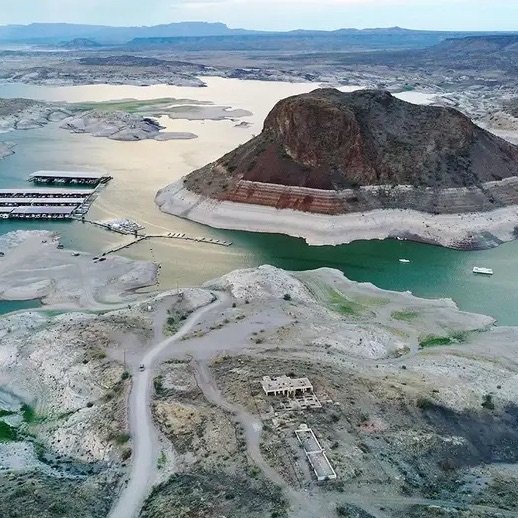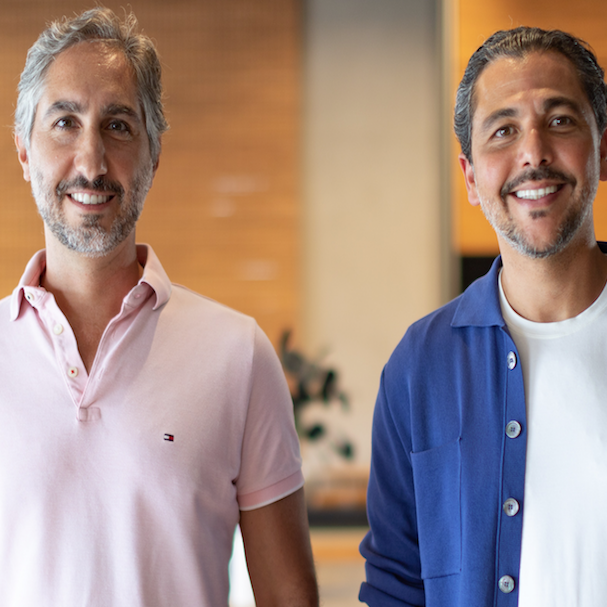The Weekly Dive #3
Research finds out whales eat an astounding 96 pounds of microplastics every day. Tesla needs more water to expand its German factory but the government is against it. An 'accidental power trip' leads scientists to find a new way of generating hydrogen. Eggs could be the hidden secret to solving the microplastic crisis. D.L. 'West' Marrin is this week's member of the HydroDAO team we are highlighting. Learn about his background and why he has decided to devote his life work to water.
Your weekly Bonus - Glaciers in at least one-third of World Heritage sites to disappear by 2050, including Yosemite.
This week's quote:
You are the daughter of the sea.
Swimmer, your body is pure as the water.
Everything you do is full of flowers, rich with the earth.
Your eyes go out toward the water, and the waves rise;
your hands go out to the earth and the seeds swell;
you know the deep essence of water and the earth.
See your body in infinite turquoise pieces,
they bloom resurrected in your inner water.
This is how you become everything that lives.
And so at last, you sleep, in the circle of my arms
that push back the shadows so that you can rest-
vegetables, seaweed, herbs: the foam of your dreams.
What's New with Water?
Blue Whales Eat an Astounding 96 Pounds of Microplastics Every Single Day
Blue whales consume up to 10 million pieces of microplastic every day.
What is causing the megadroughts in North and South America?
Periods of extreme drought can be a normal part of global climate, but rising temperatures may now be changing some regional climates for good.
South Africa's water crisis likely to be worse than its energy crisis
Climate change and resilience advisory services are an increasingly important part of its strategy globally.
A Host of Bizarre Creatures Has Been Found At The Bottom of The Ocean
We are really excited about the prospect of discovering new species, perhaps even new branches of the tree of life, which until now have remained hidden.
What's New in the Industry?
PFAS RETENTION NANO-MEMBRANES PASS THE FULL-SCALE TEST
KWR Water Research Institute has conducted a full-scale test of direct nanofiltration PFAS retention membranes from NX Filtration.
Tesla's first European factory needs more water to expand. Drought stands in its way
Tesla's contract with the German government estimates that the expanded factory will use 1.4 million cubic meters of water every year.
Interview with Sami Khoreibi and Sebastien Wakim, founders of Wisewell
Wisewell is an installation-free water purification technology that uses full-spectrum filtration to turn tap water into the highest quality of mineralised water.
Fresh-water scarcity prompts hunt for more from the air and sea
As supplies of fresh water shrink, efforts are under way to extract more from the air and sea. European research projects and companies are at the forefront of this technological challenge.
What's New in the Science?
‘Accidental power trip’ leads scientists to discover new way of generating hydrogen
Researchers from the National University of Singapore (NUS) stumbled upon a discovery that could revolutionize how we acquire hydrogen from water.
Eggs found to remove salt and microplastics from seawater
The scientists used the food substance to create an aerogel, a lightweight and porous material that can be used in many types of applications, including water filtration, energy storage, and sound and thermal insulation.
Yale launches Superfund Center to address drinking water contamination
Yale launches new Superfund Research Center, to be the first in the country to study 1.4 dioxane — a contaminant linked to cancer and found in drinking water wells throughout Connecticut.
West is an applied scientist and educator, who assists environmental, entrepreneurial and educational groups with water-related issues. He has authored three books about the science and uniqueness of water, as well as scientific journal articles addressing water pollution/remediation, aquatic chemistry/ecology, resource allocation, and the water-energy- food nexus.
He lectures on the topics of global water quality, local water footprints, sustainable water technologies, hydromimicry, and collaborations among scientists, artists, designers and engineers recognizing, communicating and addressing solutions to our water challenges. His recent work focuses on the application of systems theory, emergence and pattern recognition in perceiving and describing water resource properties and watershed functions.
He is a former Adjunct Professor at San Diego State University and holds B.S. and M.S. degrees in the biological and environmental sciences from the University of California, as well as a Ph.D. in water resources from the University of Arizona. His interest in water is also related to a lifetime of experiential endeavors surfing, SCUBA diving, paddling and exploring natural waters worldwide.
Why Water?
I was born in Southern California and spent much of my early life along the beaches of north San Diego County. Some of my fondest childhood memories are of the ocean and its various sounds, rhythms, flow forms and, eventually, the waves that propelled my surfboard. As my parents were both school teachers, there was never much doubt about my pursuing university degrees—the only question was what I would choose to study. In keeping with my childhood interests, I chose to study the oceans, water, and the natural world. I was especially interested in travel and field research, which led me to both freshwater and seawater in places as diverse as the Caribbean, Mexico, Hawaii, and the Sierra Nevada Mountains and Channel Islands of California. While I enjoyed conducting research and interacting with other scientists, I was also drawn to communicating theories and revelations about water and nature through writing and lecturing. As a result, I taught classes in several university programs and co-founded a small firm that specialized in presenting scientific concepts to non-technical audiences.
Just prior to the millennium, I decided to take a break from my conventional work and moved to the remote north shore of the Hawaiian Island of Kauai, where I resided for the better part of a decade. Surfing, swimming and kayaking, as well as hiking along mountain streams and traveling throughout Oceania, were the backdrop for my writing three books and focusing on how our perceptions of water may underlie our largely self-created challenges with water. I believe that many of today’s environmental and water-related crises are a function of how we’ve been taught about the natural world and how the resulting perceptions have been translated into our actions and decisions. Much of my work during the last decade has been offering different views of water, including the ways that scientists interpret datasets, that managers/users evaluate conservation measures, and that innovators develop technologies.
In an effort to introduce the science and mystery of water to a wider cross section of people, I began collaborating with artists, graphic designers and storytellers who provided unique ways of incorporating and presenting water science, as well as providing their own perspectives on water that have influenced my research and understandings. My professional and personal relationships with water have taught me that a genuine appreciation of it cannot be confined to a single or even a few perspectives, experiences, or understandings. Instead, a combination of diverse viewpoints is essential to realizing the countless ways in which water influences health, climate, food, and all of our human institutions. My particular interests have been in water quality, hydromimicry, and the water-energy-food nexus. I rely on and support the research, visions, and inputs of countless others who have shared their diverse knowledge base—however it may have been acquired.
What's in the Future?
Glaciers in Yosemite and Africa will disappear by 2050, U.N. warns
Glaciers in at least one-third of World Heritage sites possessing them, including Yosemite National Park, will disappear by mid-century even if emissions are curbed.













